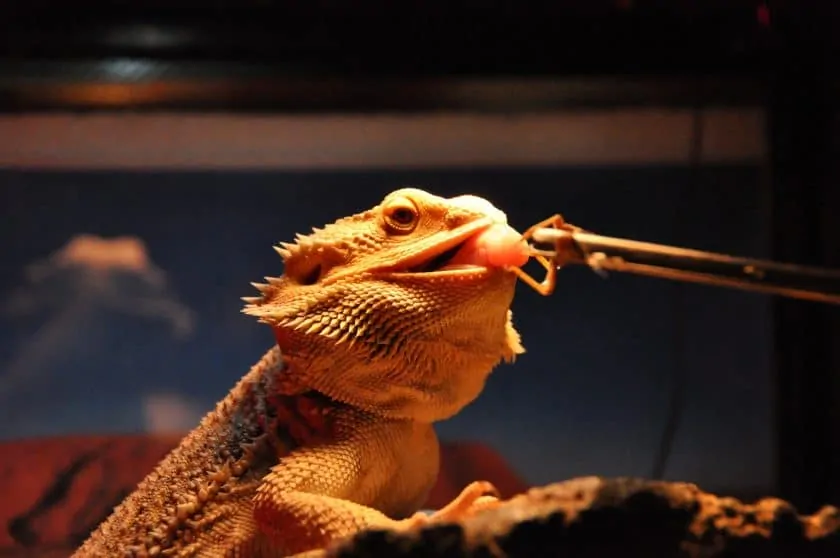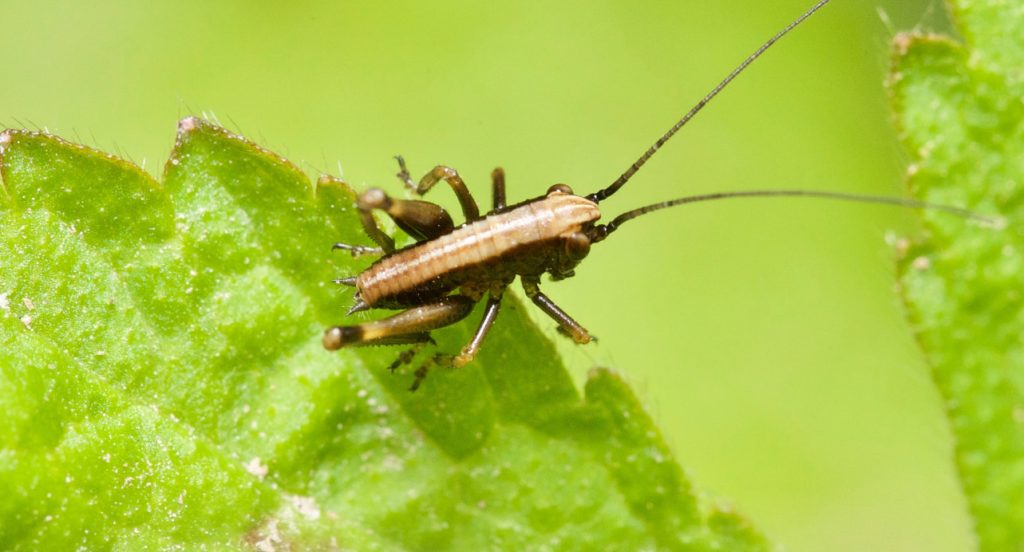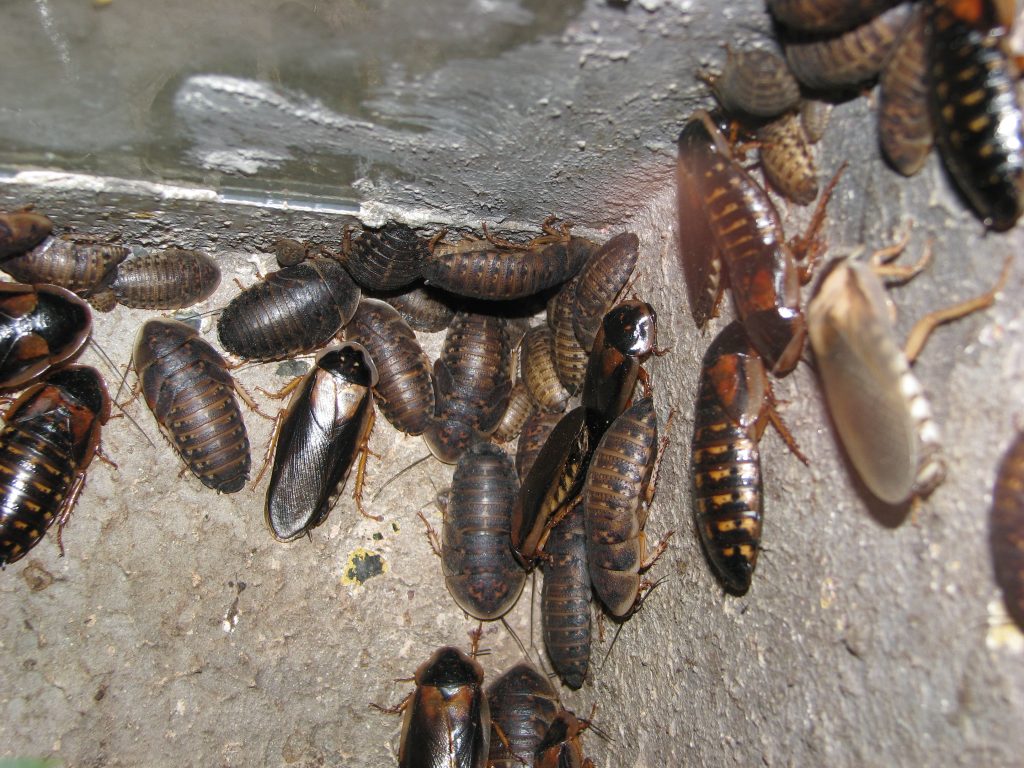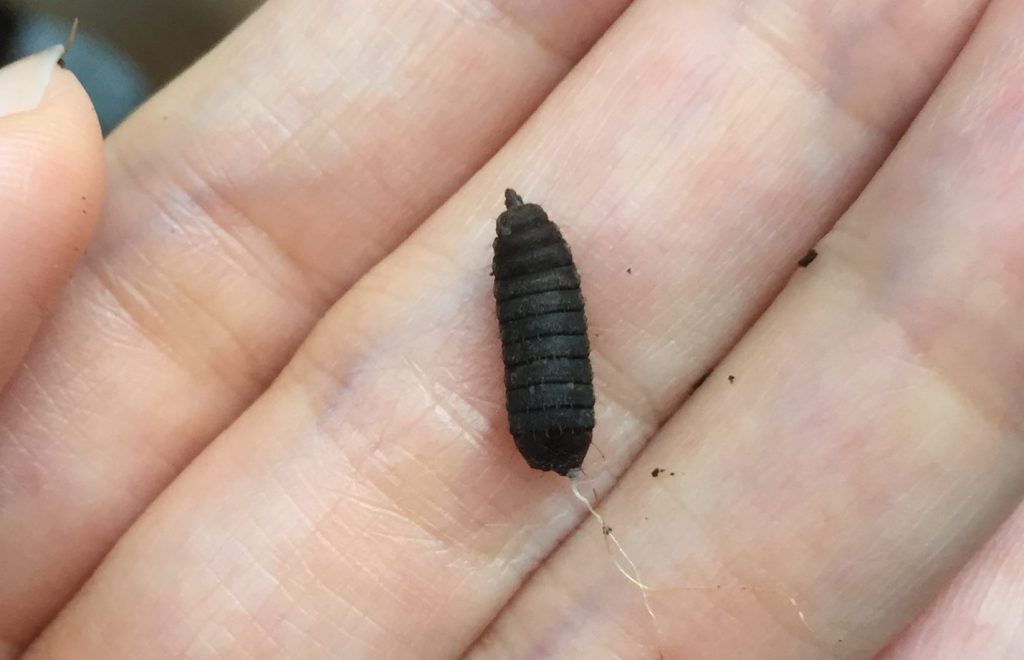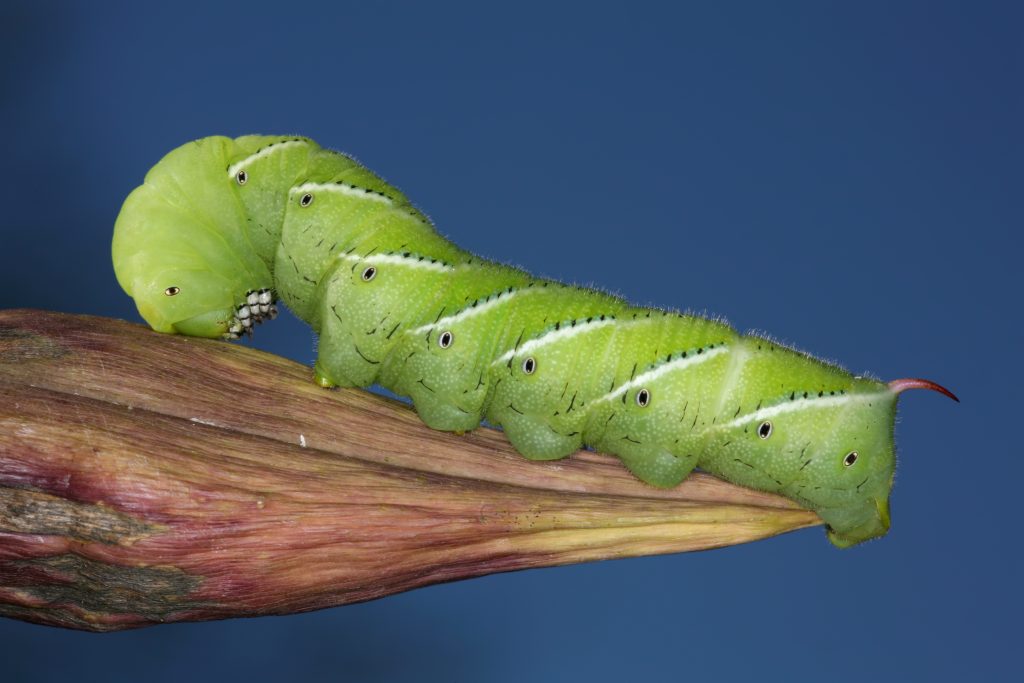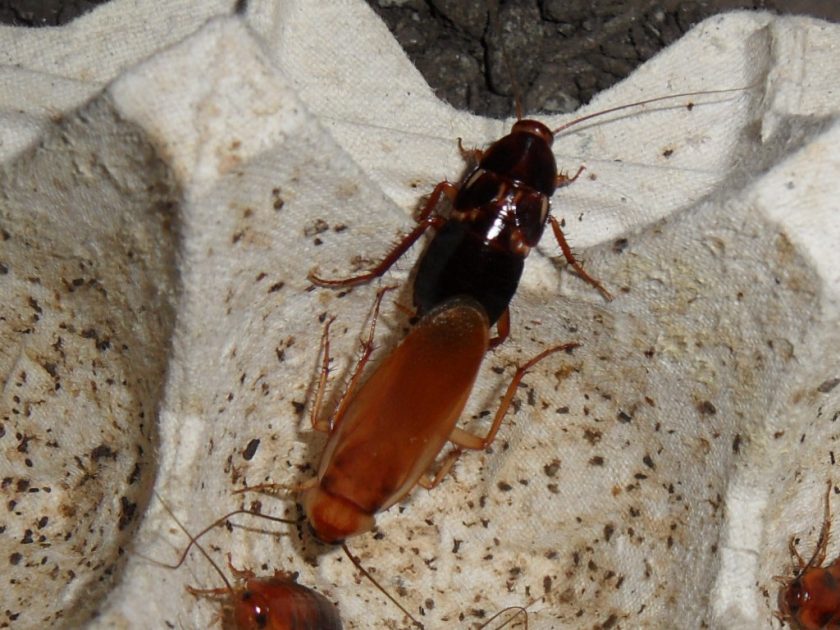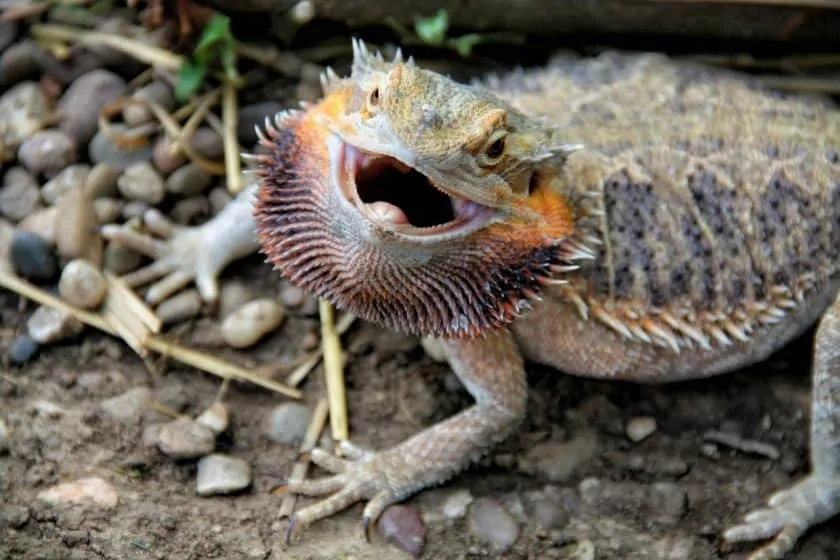Bearded dragons are omnivores, but their primary protein sources are arthropods. According to studies, around 40% of their stomach content by volume (and 60% of the stomach weight) comprises invertebrates – mostly insects.
Choosing suitable feeders is one of the top priorities if you want to provide healthy and natural nutrition for your beardie. However, you may need clarification about all the options out there.
As always, we’re here to help! Let’s have an in-depth overview of the best feeder insects for bearded dragons.
What Insects Do Bearded Dragons Eat?
The short story is that bearded dragons opportunistically eat various insects, and luckily, there are many suitable feeders for beardies available in the reptile hobby.
However, I promise that the long story is more interesting.
Although we long knew that around a third of the bearded dragon’s diet is made up of insects, until recently, there wasn’t a clear scientific clue as to exactly how much and what species beardies eat in the wild.
Finally, in 2015, Dennis Oonincx and his team explored the actual stomach content of adult bearded dragons. They concluded that arthropods compromised 42 percent of stomach volume or 61% of stomach content by weight. Out of these, amazingly, 95% were termites!
However, the conclusion wasn’t that bearded dragons are specialized in eating termites. Rather, they are opportunistic predators, choosing their prey based on seasonal availability.
The final verdict was that in captivity, “a diet consisting of several insect species, supplemented with leafy vegetables, rich in omega 3 fatty acids, would best resemble the expected natural diet of P. vitticeps”.
That means that, as a beardie caretaker, you shouldn’t try to focus on replicating the insect diet from the wild but on providing variety and good nutritional value of feeders (and later, we’ll analyze why termites would be a poor and even dangerous choice).
Can Bearded Dragons Go Without Insects?
No – bearded dragons are omnivores, and insects are essential to their diet. Since the said pivotal study came out in 2015, we know for certain that insects make up a significant chunk of the bearded dragon diet. The recommendation for adult bearded dragons in captivity is to make insects 30% of their diet.
If you have any issues keeping live insects, you can always order them, including the ones you wouldn’t be able to raise at home anyway – such as hornworms, black soldier fly larvae, and silkworms. You can store them inconspicuously in your refrigerator. Also, canned insects are a good supplemental option, but don’t rely solely on these as arthropod staples.
Best Feeder Insects For Bearded Dragons
Healthy beardies often have hearty appetites and try to eat almost any insect. However, some insects are better than others due to their nutritional properties and ease of keeping.
Note: all the nutritional data originates from dubiaroaches.com.
Crickets
Crickets are no longer considered the best staple food for bearded dragons, but I have to mention them first because, historically, they have been the central staple for adult beardies. However, they still make a good way to add variety. Plus, they remain pretty common in the pet trade, especially in chain stores where more specialty feeders are rarer to find.
Quality, gut-loaded crickets are a great option to add novelties to your beardie’s diet, especially since they’re so readily available.
There are also canned cricket options that beardies often accept, and they’re convenient to have at hand in case you run out of live food.
Crickets Nutritional Data
- Moisture: 77.1%
- Protein: 15.4%
- Fat: 3.3%
- Calcium: 275 mg/kg
- Phosphorus: 2520 mg/kg
Dubia Roaches
Times when the staple food for your beardies was at constant risk of escaping and causing havoc in your house are long gone. The mischievous, agile, and biting house crickets were once the most common feeder insects in the hobby. Luckily, they’ve been largely replaced by docile, slow, and more nutritious Dubia roaches.
There’s not much NOT to love about dubias. They are slow and calm, don’t climb walls or jump, and don’t chirp or vocalize. Sure, they can smell a little roach-y, but still, they smell much less than many other roaches and crickets.
What’s best, dubias are also more nutritious than crickets, mealworms, and many other feeder insects. They have high calcium content and are nicely packed with protein and very little fat. Another perk is that if you successfully start your own dubia colony, you’ll have a variety of nymph sizes to offer your pets.
Dubia Roach Nutritional Data
- Moisture: 65.6%
- Protein: 23.4%
- Fat: 7.2%
- Calcium: 700-800 mg/kg
- Phosphorus: 2600 mg/kg
Black Soldier Fly Larvae (BSFL)
Black Solider Fly larvae, also commercially known as ReptiWorms, Phoenix Worms, and Calciworms, have become highly popular feeders due to their extremely high calcium content. Another perk is that they are lean – rich in protein but not fat.
The nutritional profile makes the BSFL an ideal food source for baby and juvenile bearded dragons because all the calcium helps prevent metabolic bone disease. However, older dragons might be reluctant to eat them, primarily due to the maggots’ relatively small size and limited mobility.
Of course, all the calcium won’t be absorbed without sufficient Vitamin D, so ensure you have a UVB lamp – which is mandatory for beardies!
Black Solider Fly Larvae Nutritional Data
- Moisture: 61.2%
- Protein: 17.5%
- Fat: 14%
- Calcium: 9340 mg/kg
- Phosphorus: 3560 mg/kg
Hornworms
Hornworms or Goliath Worms are one of the largest feeders on our list. They are not “worms” but caterpillars of the Tobacco Hawk Moth (Manduca sexta).
With 85% moisture content, hornworms are also the juiciest feeder on its list, with upsides and downsides. They are a popular staple because of their nutritional content, size, and fast-paced growth.
Due to their water content, hornworms are ideal for rehydrating your dragon through food. This is especially useful during the brumation months when its behavior changes and appetite and taste for water diminishes. However, too much moisture could give your pet diarrhea, so you should offer hornworms with other, drier staples such as dubia or crickets.
Hornworm Nutritional Data
- Moisture: 85%
- Protein: 9%
- Fat: 3.07%
- Calcium: 464 mg/kg
- Phosphorus: 1394 mg/kg
Red Runner Roach or Turkistan Roach
Check out fast movers like Red Runner roaches if your lizard pet gets sluggish at feeding time in tune with the slow-moving prey you’ve been offering. Their exoskeletons are thin – thinner than in dubia roaches – so they make a meaty and protein-rich meal that is easy to digest. Interestingly, they are exceptionally high in vitamin B12.
As for their behavior, these roaches are very active, do not burrow, and can’t climb glass or other smooth vertical walls – meaning that you can release them into the tank so the beardie can have fun and exercise chasing them around. That can be an excellent strategy for lizards not interested in slow-moving prey.
However, there are downsides to red runner roaches as well. They are considered invasive in the U.S. and can survive outside in southern states. Because of that, keeping them is outlawed in Florida and a few other places.
Secondly, as their name suggests, the red runners are super-fast. Although they can’t climb smooth walls, they combine crawling, running, and jumping in such a way that they can use all structures that reach for the top of the box to try to escape, so handling them can be stressful, especially if you’re squeamish.
Turkistan Roach Nutritional Data
- Moisture: 74%
- Protein: 17%
- Fat: 5%
Can Bearded Dragons Eat Mealworms? What About Superworms and Waxworms?
Mealworms and superworms are not recommended everyday feeders for bearded dragons because of their relatively high-fat content and hard exoskeletons. The hard shells can cause impaction or make your beardie throwing up its meal, indigestible from all the chitin. However, these larvae are still worth considering as an occasional item on the menu for variety and a treat.
Waxworms and butterworms are too fatty to be offered as anything other but an occasional treat.
Do Bearded Dragons Prefer Crickets or Roaches?
Preference for crickets, roaches, or any other feeder insect is highly individual. However, crickets may be more attractive to beardies because they tend to be active, while dubia roaches are slow and will look to escape the light and burrow. However, they are far more nutritious than crickets.
Do Beardies Prefer Live Or Dead Crickets?
Bearded dragons prefer live prey, ideally one that is lively enough to catch their attention. Logically, dead, canned crickets aren’t their preferred food, but most beardies will eat them without live ones.
Speaking of dead crickets – never give your bearide (non-canned) crickets that died, regardless of the cause. In most cases, that would be like feeding rotten meat to a dog.
What Type of Insects Should I Avoid Feeding to My Beardie?
Insects you should avoid feeding your beardie include those whose shells are too hard, those high in fats, or those coming from unclean, unreliable sources with the potential to carry parasites or pesticides.
Here are some examples of insects you do not want to feed to your beardie.
Beetles
While it might be tempting to give your beardie excess beetles you have in your mealworm or superworm colony, think twice.
Almost all beetles have tough exoskeletons (the “shells”) that could cause impaction (intestinal blockage). Considering that beetles are not exceptionally nutritious, the risk is not worth it.
Fatty Insects Low in Nutrients
Waxworms and butterworms are often among the favorite reptile meals – except they should never be a meal, only a treat!
You’re wrong if you think reptiles are simple creatures without a taste for specific foods. Just as most humans love the taste of fatty bacon, most lizards adore the fatty waxworms.
However, that doesn’t mean you should allow your beardie to feast on waxworms. These larvae are way too high in fat. Serve them as a tasty treat to spice the menu up occasionally instead.
Fish-Bait Shop and Wild-Caught Insects
Insects from non-specialized sources, such as bait shops or the outdoors, can harm your pet.
Bait shop insects may harbor parasites and bacteria and have traces of pesticides or other toxic substances.
It is true that wild-caught insects such as locusts can give you a highly desired variety and are gut-loaded with wild plants that likely contain plenty of diverse nutrients. However, all the risks of bait shop insects also apply to wild-caught arthropods.
When you calculate the stress and financial costs of specialist reptile vet examination and treatment and compare it to what you save and gain by catching wild insects, ordering more feeders from trusted sources pays off more than taking risks.
Termites
Remember the study I cited several times that acknowledged that insects make up almost half of the wild bearded dragons’ diet and that most prey items were termites? Perhaps, at that moment, you thought termites would be a great addition to your beardie’s menu.
Unfortunately, I’m here to tell you it’s not a good idea.
In the bearded dragon’s natural habitat, termites are abundant and a great protein snack. However, things are very different with wild termites you can find in the US – and here is why you should never offer them to your reptile pets.
Food that termites eat may include pressure-treated wood laden with pesticides. Even if it’s all-natural, the chemicals from pine trees they consume can harm your beardie. Add the risk of introducing bacteria (typical for all wild insects), and you’ll quickly realize that termites are a definite ‘No’ for captive beardies.
How Do You Feed Insects to Bearded Dragons?
Unfortunately, most commercially raised feeders are nutrient deficient. That means they will likely have less than required calcium and vitamins such as Vitamin B1, A, and E.
The good news is that bearded dragons get a wide variety of vitamins and minerals from the plant portion of their diet. However, you will still need to gut load your feeders, dust them with calcium, and occasionally multivitamins to keep things optimal.
Gutloading means giving insects nutrient-dense meals 24-48 hours before feeding. There are also commercial formulas intended for gutloading that can do the trick.
You can offer your beardie insects in a feeding tray with some reptile calcium powder spread over its bottom.
The Insect-Plant Ratio for Bearded Dragons
The ratio of insects vs. plants mostly depends on your bearded dragon’s age. As a rule:
- Baby beardies, growing fast and needing loads of protein, should consume around 80% of insects and 20% of plants.
- Juvenile beardies should gradually shift to a 50-50% diet.
- Adult bearded dragons should eat 20-40% of insects (with 30% being the optimum) and 60-80% of plant food.
After your beardie has matured and almost reached its full size, you will shift towards plant foods gradually, day by day.
How Many Insects Should You Give Your Beardie?
Offer your beardie an insect meal once per day. Many adults will be fine with a daily portion of insects three to four times per week.
The opinion of how many insects you should offer your beardie varies. On one side, you have strict lists of how many of each feeder to give to your beardie. On the other, there are bits of advice to offer as much as your pet can eat per feeding session.
I used to be a fan of the latter approach, but I’ve seen too many obese reptiles over the years, so now I err on caution. Eight to ten Dubia roaches or their equivalents per feeding, not longer than the width of the dragon’s head, is what many consider an optimum. You need to cut this number to 4-5 per feeding when offering hornworms or other insects with a high water content.
Take Care!
Mimicking natural nutrition is one of the keys to their good health and long life. However, we shouldn’t take things literally and try to provide our pets with the exact insects they eat in the wild. Instead, we should focus on giving the variety and nutritional value of the original bearded dragon diet.
Gut-loaded Dubia roaches, hornworms, crickets, Calciworms, and an occasional fatty classic such as a mealworm or a superworm will keep your dragon occupied and well-fed. The plant portion of the diet will also provide many vitamins and minerals that the insects lack.
I hope this article has given you a deeper insight into bearded dragon insect feeders. Any questions? Feel free to ask us. Here’s one for you – what’s your favorite insect combo for a bearded dragon? Let us know in the comments!

